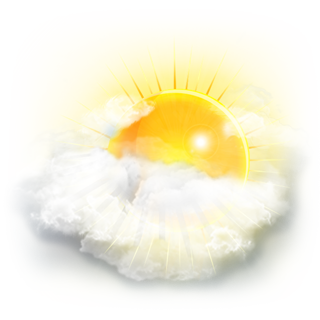The bewitching premiere of American Horror Story’s “Coven” drew in 5.54 million viewers. The premiere is noted for being the largest ever within the American Horror Story series; marking a 44 percent increase in viewers from last year’s critically acclaimed “Asylum.” Coven marks the third installment in the American Horror franchise for previous fans, and provides a peek into the devilish terror is in this next chapter of television horror.
Created by Murphy and Falchuk, the same duo behind “Glee,” American Horror Story rarely displays the pep and saccharine sentiments of its Glee predecessor. Coven begins in the 1800s and follows through into the present day in timeless New Orleans. This season starts out in 1834 where we meet Marie Delphine LaLaurie, played by the powerhouse Kathy Bates, who is a Louisiana socialite with a dark habit of killing and torturing her house slaves in the attic as well as using their blood for her beauty rituals. From here, Coven jumps to the present time where a young teenager, Zoe Benson (Taissa Farmiga, who also played Violet Harmon in the first season of American Horror Story) discovers she is a witch in the most awful way. She is then sent to a boarding school to protect and train young witches in New Orleans called: “Miss Robichaux’s Academy for Exceptional Young Ladies.”
There, Zoe encounters her fellow peers: a teen movie starlet who can move objects with her mind and is as snobbish as she is defiant, Madison Montgomery (Emma Roberts); the ever sassy and fire tongue Queenie (Gabourey Sidibe), who as a human voodoo doll who can inflict pain on others using her body as a medium; and the charming Nan (Jamie Brewer), a clairvoyant who also has Down Syndrome. Zoe meets the school’s headmistress, mild-nature Cordelia Foxx (recurrent American Horror story actress, Sarah Paulson), as well as the unapologetic and bold Supreme witch of her generation, Fiona Goode (Jessica Lange), who has returned to Miss Robichaux’s to train the girls herself.
Subtlety is generally not in the vocabulary of the show. Expected to be shocked, disgusted, and appalled in any given episode. Other than just shock value, what makes Coven a must-watch is the way Murphy and Falchuk wield horror to tackle deeper issues creating a show that is just as socially thoughtful and substantial as it is graphic. For example, brought out of the history books, Kathy Bates’s real-life character, Madame LaLaurie, is a reminder of perhaps America’s greatest horror story of them all: slavery.
Racial tension is very much felt in Coven, with the issues of whites against blacks and a minority group marginalizing another minority group being conveyed through the battleground of witchcraft vs. voodoo. We are able to see this tension between Queenie and Madison, and on the larger front, between the Supreme, Fiona and the Voodoo Queen, Marie Laveau (played by the poised Angela Bassett). The exchange between Fiona and Marie Laveau not only notes the deeper societal disparities between the races, but also makes for an entertaining battle from the witty remarks the actresses throw at each other, with Laveau delivering one-liners like: “I wouldn’t help you even if you offered me a unicorn that shits one hundred dollar bills.”
All the while, interspersed between the gore and blood, there are rich moments of humanity from Lange’s character of Fiona. As the Supreme witch of their generation, Fiona must confront her own mortality as the show progresses. As her time is running up, and with the treat of a new emerging Supreme coming into maturity, we see Fiona struggle to come to terms with her mortality and the time left she has to reconcile her relationship with her daughter Cordelia (Paulson) that helps ground Coven to a believable reality.
Also of note is the predominant cast of female actresses—all talented in their own right. American Horror Story has a delicate hand of tip-toeing the boundaries of feminism and misogyny; showing both female empowerment and oppression in past seasons. Coven remains true to this DNA of AHS, asserting both the control and power of its female characters as well as the challenges that they are faced with, from rape, abuse and relationships with each other to the limitations of sexuality, fertility and mortality. In this sense, Coven is very much a story of different identities of womanhood as each character navigates through their individual limitations.
Presented as an anthology series, each season of American Horror Story tells a different story with a beginning, middle, and end that is all contained within thirteen episodes. For example, “Murder House” portrayed the Harmon family who move into a renovated mansion haunted by the its past residents, while last spring’s “Asylum” follows the occupants of the horrific Briarcliff Mental Institution in 1964 and then cuts to the present. Although each season of AHS offers a unique story, what remains constant is the series’ ability to deliver proactive themes and fresh characterization of gore and horror to tell underling social issues. Coven follows this recipe of success that makes for surely wicked and enchanting seasons to watch.


